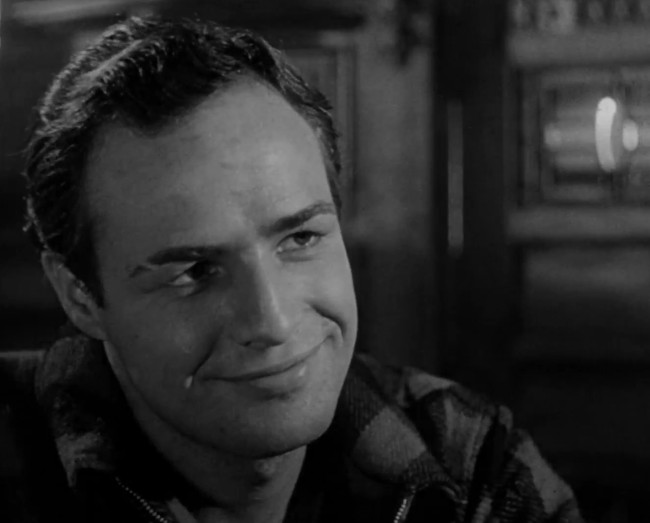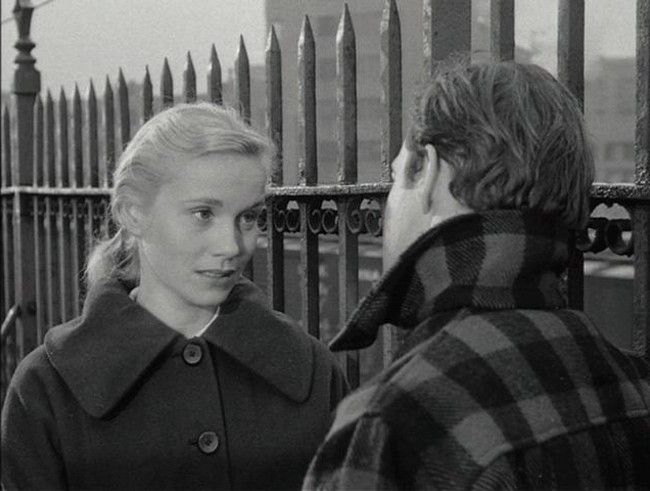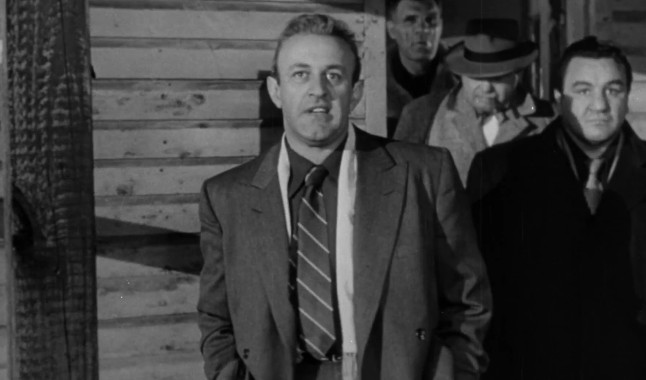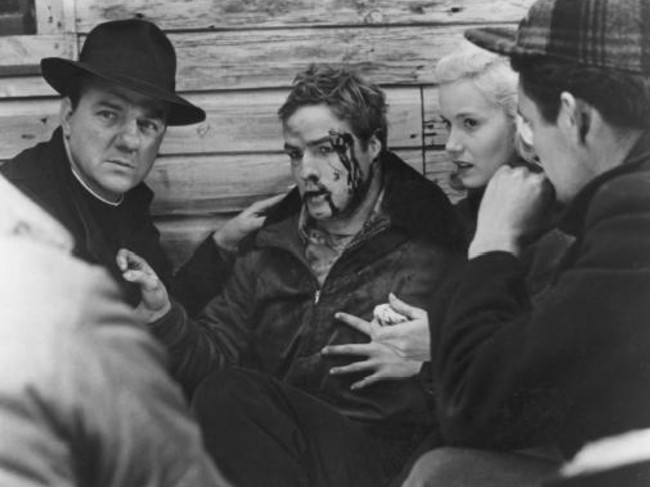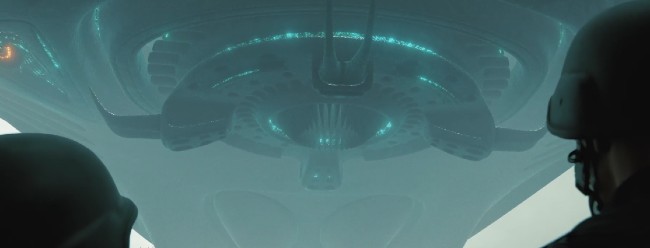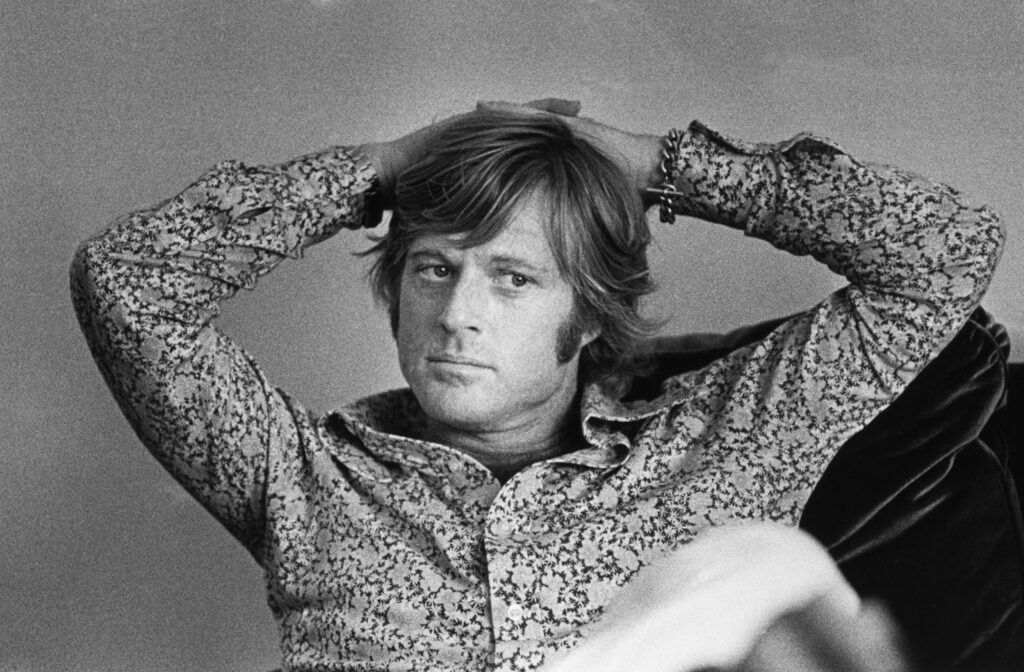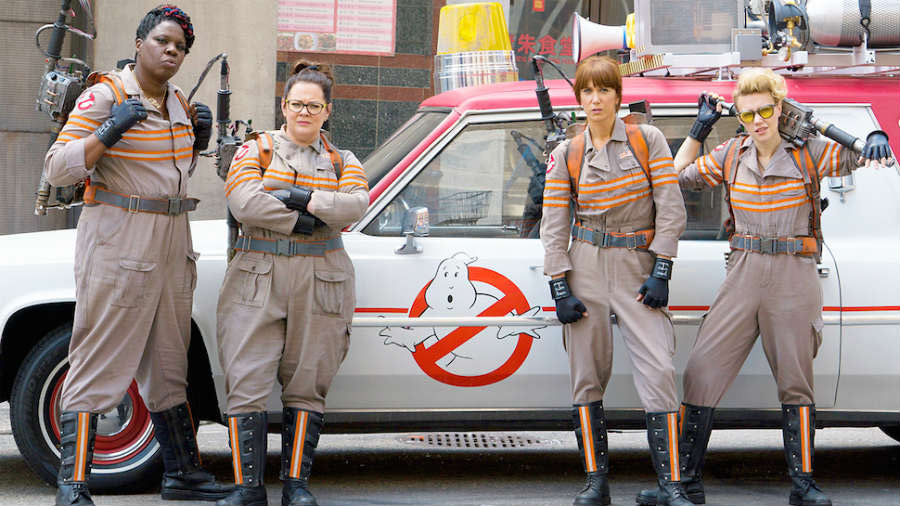On The Water Front with The National Film Registry Part I
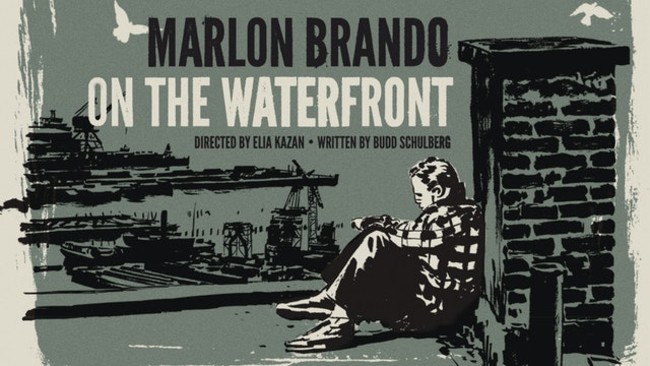
Our journey through the National Film Registry takes us to the mob controlled docks of Hoboken, NJ in our multi-part dive into On the Waterfront.
On the Waterfront is arguably one of the greatest movies ever committed to film. It won eight of the twelve Oscars it was nominated for at the 1955 Academy Awards. The movie and its director Elia Kazan influenced a generation of directors including Martin Scorsese. It’s still listed on almost every 100 Best Movies of All Time lists.
On the Waterfront is the story of Terry Malloy (Marlon Brando in one of the best performances of his young career) a longshoreman who works for corrupt union boss Johnny Friendly (Lee J. Cobb) and his struggle to break the code of silence on the docks of Hoboken, NJ. His journey from lackey to dock hero is the essence of the movie.
Critics have often called Terry Malloy a ‘thug’ and a ‘henchman.’ Neither description accurately reflects the real Terry Malloy. These descriptions imply a malevolence in Terry that is not supported in the film. It’s true the first time we meet Malloy he’s luring Joey Doyle to the roof of his apartment building under the pretense of returning one of Doyle’s pigeons (Pigeons are a constant theme in On the Waterfront). Joey is thrown to his death by members of Doyle’s gang. His crime was talking to the Waterfront Commission investigating Doyle’s union.
Malloy says later that he thought Friendly was only going to “rough up” Joey. Should Malloy have known better than to think Friendly would do anything but kill Joey Doyle? Malloy isn’t the smartest member of Doyle’s gang. An early scene shows him struggling to count to forty two. Malloy also acts out of a sense of self preservation. Terry and Joey grew up in a place where the rule of law was the rule of “D and D”, Deaf and Dumb. The penalty for breaking this rule, as Joey Doyle found out, was often a death sentence.
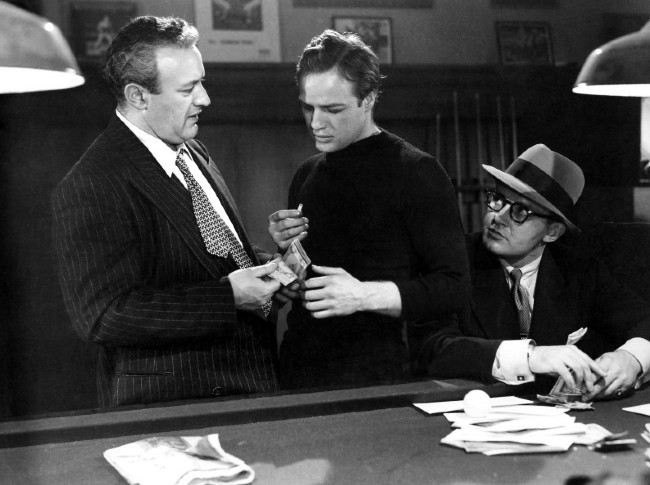
Brando’s Malloy is a beaten dog and like a beaten dog he cringes anytime he’s around Friendly or his gang. He’s subservient to Doyle, his brother Charley the Gent (Rod Steiger), and the other members of Doyle’s gang. Malloy obliges when Friendly tells him to sit on on Father Barry’s (Karl Malden) in order to find out who may be thinking about talking to the police. When Friendly and the other members of the gang taunt and tease him he takes it and rarely says anything in response.
As abused dogs often do he clings to Friendly and Charley. After Doyle’s death Malloy stays in Friendly’s gang. His reward is easy jobs which involve little to no work. However, conflict is central to the development of any character. Malloy’s conflict is both inner and external. Soon after Doyle’s death Malloy meets Joey’s sister Edie (Eva Marie Saint). Edie pokes and prods Malloy to do what’s right and to listen to his conscience. Malloy’s response to Edie is “Conscience…that stuff will drive you crazy.”
Terry is dead set against testifying for the Waterfront Commission. In fact, he’s quite determined not to testify against Friendly. Not even a court subpoena is enough to get him to testify. Although past critics have given Edie and Father Barry the credit for Terry’s change of heart these critics couldn’t be further from the truth. Terry’s change of heart is all the doing of Johnny Friendly.
When it seemed Terry would testify, unknown to Friendly Terry was still undecided, Friendly calls in Charley to talk some sense into Terry. “Sense” in On the Waterfront is code for Charley to kill Terry. Friendly’s order leads to one of the most famous scenes in cinematic history. However, Charley lets his brother go. The next time we see Charley his body is hanging from a hook.
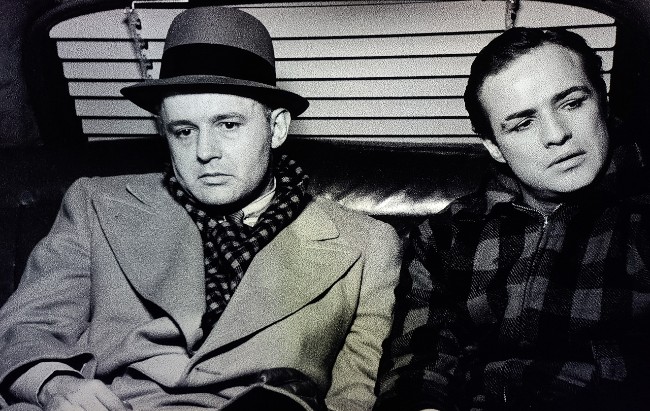
Now the beaten dog is ready to turn on its master. Terry testifies against Friendly and his gang, but it doesn’t yield the immediate results Edie and Father Barry promised, the happy ending doesn’t seem like it will happen. Johnny Friendly, down but not out, is still in charge and the corrupt union is still intact. Malloy, on the other hand, is ostracized by his friends, fellow longshoremen, and even his pigeons are killed.
Terry’s return to the docks isn’t greeted with cheers. For most of the film Terry had been greeted with contempt by the other longshoremen. He was a member of the Friendly gang which did not endear him to the others. It’s only when Terry directly challenges Friendly that things change.
Although we only hear about Malloy’s boxing career we never actually see him in the ring until the end of the movie. Shortly after he returns to the docks Malloy and Friendly fight. The dock is the boxing ring and the longshoremen is the audience. The fight is the culmination of years of playing the fool and it’s released all at once. The fight is easily one sided in Terry’s favor until Friendly’s gang come to his aid.
Terry is left battered and bruised, but it finally spurs the longshoremen to take action. They refuse Friendly’s orders to go back to work if Terry isn’t allowed to work with them. As Terry is followed into the warehouse by the rest of the longshoreman Friendly’s power over them is finally broken. The happy ending is preserved.
END PART I

